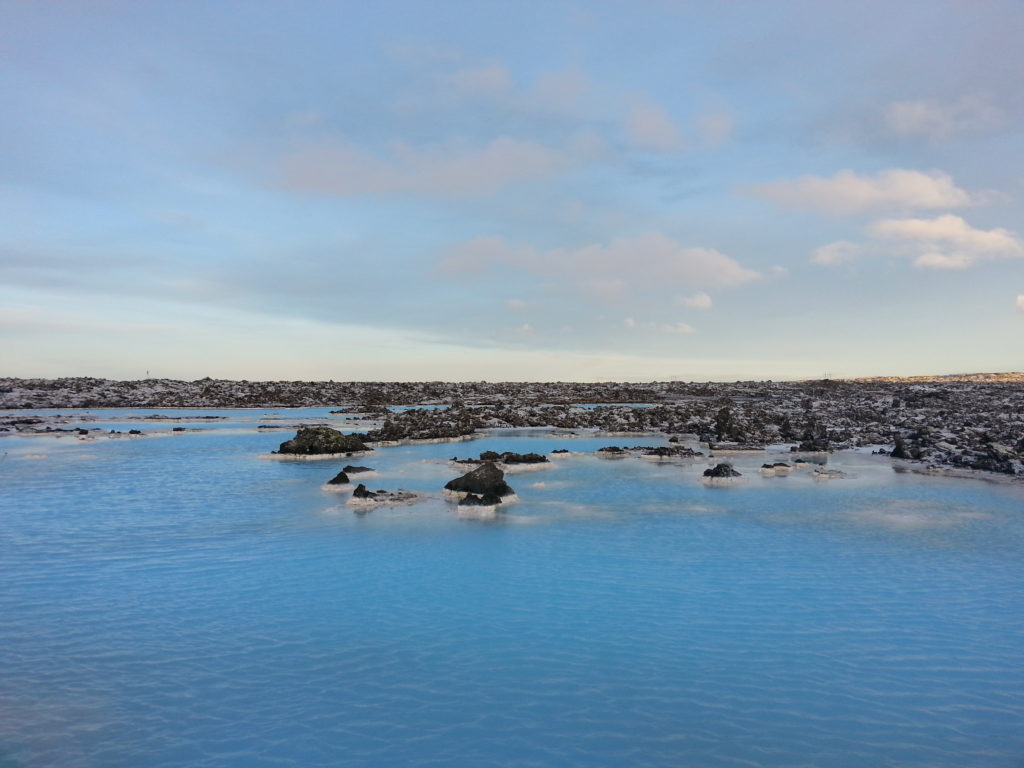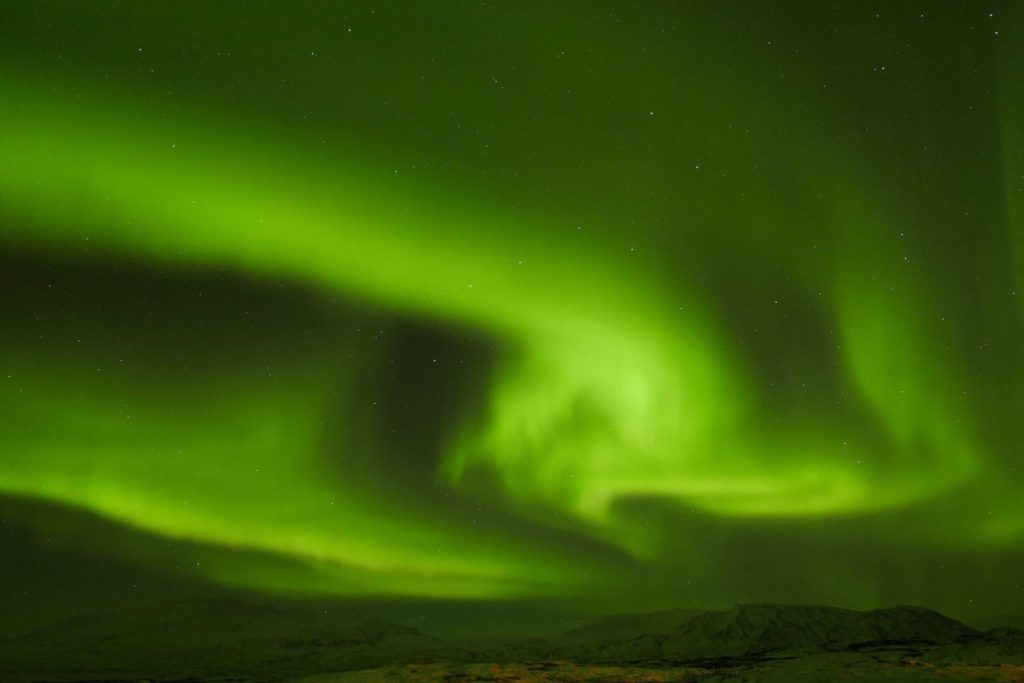
Borealis Bounty
My final day in Iceland began with a forty-minute hop to the south-western corner of the island, in order to view another tourist attraction that has recently become synonymous with the country: the Blue Lagoon. Over the last few years, it has become one of the most photographed places in Iceland, with an incredible 32% of all tourists visiting it on their trips. Whilst there is no doubting its beauty, not many people realise that the pool is not as natural as it’s made to appear – it was formed from the waste water of a nearby geothermal power plant, no less. I don’t believe any of the couples there (of which their were many) could care less about where the water came from, though, it’s simply a spectacular place to have a bath.
As I wasn’t that enamoured by the prospect of sitting in a pool of steaming geothermal waste on my own, I decided to go for a walk around the site and take a few photos of the supernatural landscape that surrounds it. It really is a unique country. Vivid turquoise lakes hidden amongst knolls of volcanic rock, dusted with fresh snow – it is unlike any other place I have seen. Despite more than triple the whole population of Iceland visiting the nation each year, it still feels relatively untouched and unexploited. I hope they do not lose this sentiment as numbers continue to soar year-on-year, with over half a million Americans visiting in 2017 alone. I stayed until the sun set (which took about three minutes), and headed back to Reykjavik, for one last shot at a glimpse of the infamous lights.
After a swift half in the Íslenski Barinn (the local pub), I boarded the Borealis bus for the final time, and headed back out into the Icelandic countryside. Both guide and driver were far more optimistic this evening, given that the skies were far clearer than they had been on our two previous attempts (as can be seen in the daytime photos above). In fact, so confident they were, they offered the group a beer each if we were unable to spot them at any point during the night. Their bet was safe as soon as we left the light-polluted city and pulled into the nearest field – yes there they were. Dimmer and more subtle than I had envisaged, they still brought about a sense of awe and realisation that we were witnessing one of earth’s greatest natural phenomenon.
Whilst they may look incredibly bright and lustrous in the photos taken, it took a good twenty minutes of tinkering to perfect the settings on the camera in order to capture them in that way – an ISO of 1600, an aperture of at least f/2.8, and a shutter speed of around twenty seconds is the minimum requirement for those who want to know. Something else I didn’t know is that the colour of the aurora depends entirely on the wavelength of light emitted, and the height from which it originates – with greenish-yellow being the most common. Blues and purples, caused by ionized nitrogen, are next likely to be seen, whilst a blood-red aurora from top-to-bottom is only seen once every ten years – consider buying a lottery ticket or two if you spot that one.
I consider myself extremely fortunate to have beheld them, whatever colour they may have been, especially given it was my last attempt – at least for now. I do not doubt that I will return to this quite incredible country at some point in the future. It was also my last night on a journey that led me to Canada a full fifteen months prior, and to every state in America since. I was about to head home after the first major leg of my journey around the world, and my first taste of life on the open road. If indeed a travel bug exists, then I have been well and truly bitten by it. I already cannot wait to begin planning the next leg of the voyage, whether it be to Algeria, Afghanistan or Argentina. I hope to see you there…
J











